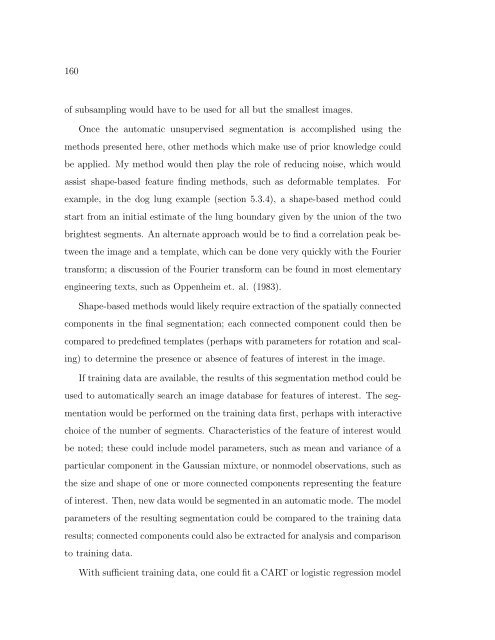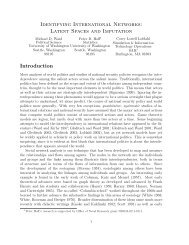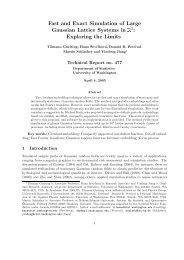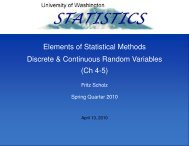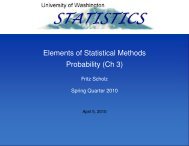View - Statistics - University of Washington
View - Statistics - University of Washington
View - Statistics - University of Washington
You also want an ePaper? Increase the reach of your titles
YUMPU automatically turns print PDFs into web optimized ePapers that Google loves.
160<strong>of</strong> subsampling would have to be used for all but the smallest images.Once the automatic unsupervised segmentation is accomplished using themethods presented here, other methods which make use <strong>of</strong> prior knowledge couldbe applied. My method would then play the role <strong>of</strong> reducing noise, which wouldassist shape-based feature finding methods, such as deformable templates. Forexample, in the dog lung example (section 5.3.4), a shape-based method couldstart from an initial estimate <strong>of</strong> the lung boundary given by the union <strong>of</strong> the twobrightest segments. An alternate approach would be to find a correlation peak betweenthe image and a template, which can be done very quickly with the Fouriertransform; a discussion <strong>of</strong> the Fourier transform can be found in most elementaryengineering texts, such as Oppenheim et. al. (1983).Shape-based methods would likely require extraction <strong>of</strong> the spatially connectedcomponents in the final segmentation; each connected component could then becompared to predefined templates (perhaps with parameters for rotation and scaling)to determine the presence or absence <strong>of</strong> features <strong>of</strong> interest in the image.If training data are available, the results <strong>of</strong> this segmentation method could beused to automatically search an image database for features <strong>of</strong> interest. The segmentationwould be performed on the training data first, perhaps with interactivechoice <strong>of</strong> the number <strong>of</strong> segments. Characteristics <strong>of</strong> the feature <strong>of</strong> interest wouldbe noted; these could include model parameters, such as mean and variance <strong>of</strong> aparticular component in the Gaussian mixture, or nonmodel observations, such asthe size and shape <strong>of</strong> one or more connected components representing the feature<strong>of</strong> interest. Then, new data would be segmented in an automatic mode. The modelparameters <strong>of</strong> the resulting segmentation could be compared to the training dataresults; connected components could also be extracted for analysis and comparisonto training data.With sufficient training data, one could fit a CART or logistic regression model


